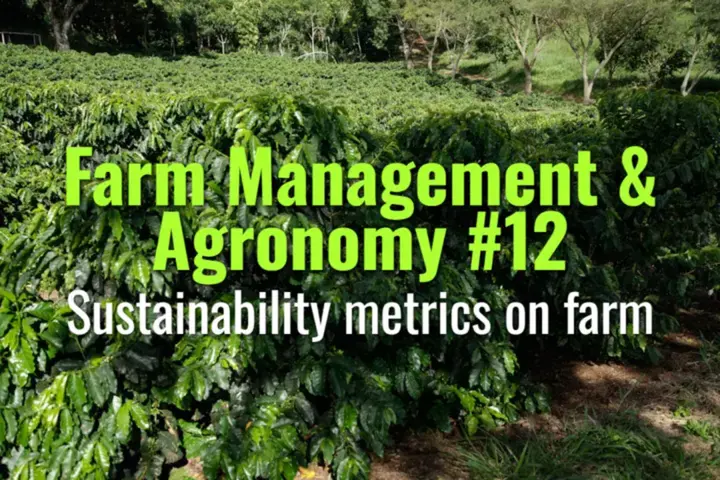Sustainability metrics on farm
This topic introduces the key sustainability metrics used in coffee farming, how they are measured, and why tracking them is vital for environmental health, farmer livelihoods, and market access.
- Coffee Basics Nerds
- 2 min read
Article 12 of 12 in Farm Management & Agronomy/

Why Sustainability Metrics Matter
- Coffee faces challenges of climate change, deforestation, and market pressure.
- Metrics provide a way to measure, monitor, and improve farm practices.
- Increasingly required for certifications and buyer transparency.
Key Sustainability Metrics
1. Environmental Metrics
- Carbon footprint: Greenhouse gas emissions from farming activities.
- Water use efficiency: Liters of water per kg of green coffee.
- Soil health: Organic matter %, erosion rates, nutrient balance.
- Biodiversity indicators: Presence of shade trees, bird and insect diversity.
2. Social Metrics
- Labor conditions: Fair wages, worker safety, absence of child/forced labor.
- Community impact: Contribution to local employment and development.
- Training & education: Access to farmer field schools and extension services.
3. Economic Metrics
- Yield per hectare: Productivity relative to inputs.
- Cost of production vs market price: Profitability tracking.
- Price premiums: Earnings from certifications (Organic, Fairtrade, Rainforest Alliance).
Tools and Methods
- Farm audits: On-site verification by certification bodies.
- Farmer self-assessments: Record keeping of inputs, yields, and practices.
- Technology: Drones, sensors, and mobile apps for data collection.
- Certification frameworks: Provide structured metrics (e.g., Rainforest Alliance 2020 standard).
Benefits of Tracking Sustainability Metrics
- Improves efficiency and reduces waste.
- Enhances soil, water, and biodiversity conservation.
- Provides market differentiation and access to premium buyers.
- Strengthens resilience against climate variability.
Challenges
- Data collection can be costly and time-consuming.
- Smallholders may lack resources or training.
- Risk of “audit fatigue” from overlapping certifications.
Lasting Importance
Sustainability metrics help coffee farms transition from traditional subsistence practices to modern, resilient systems. By quantifying environmental, social, and economic performance, farmers can prove sustainability to markets, secure better incomes, and protect ecosystems for future generations.